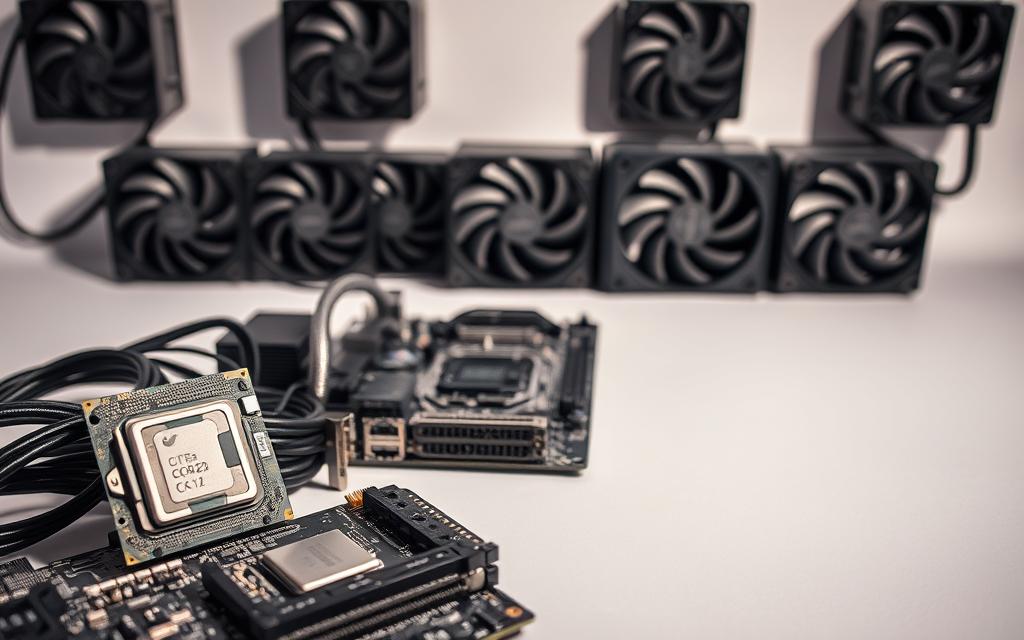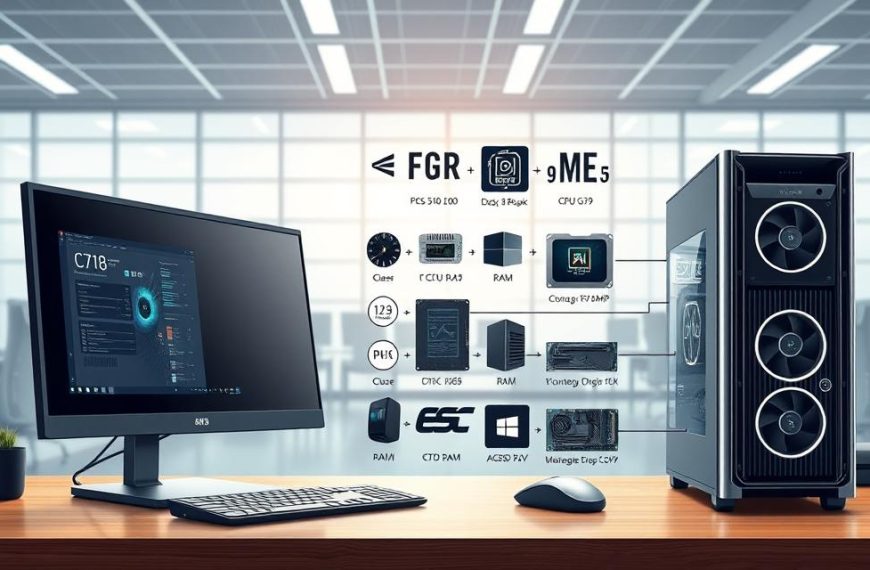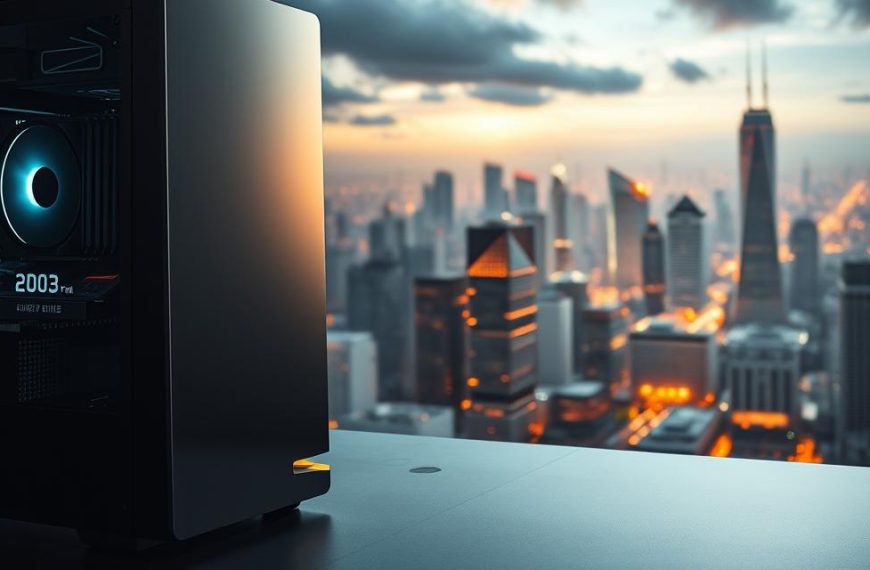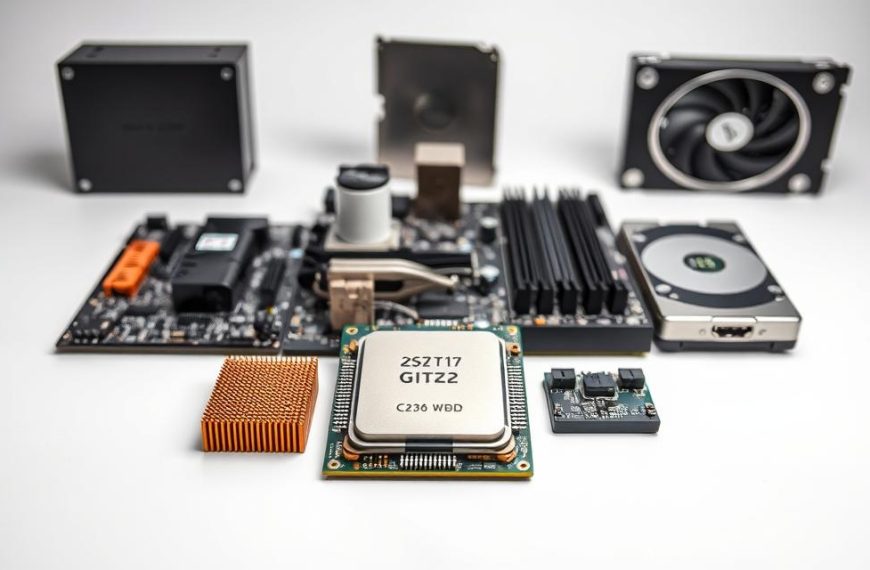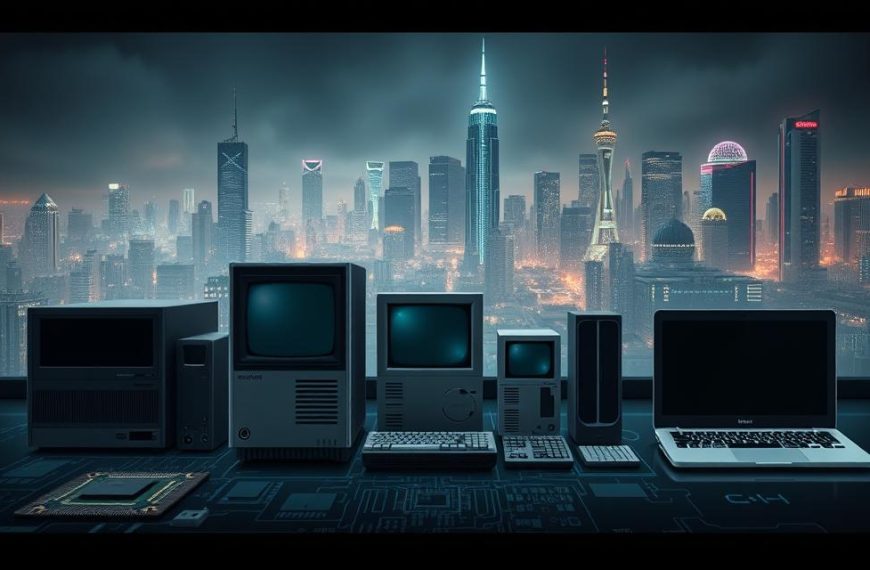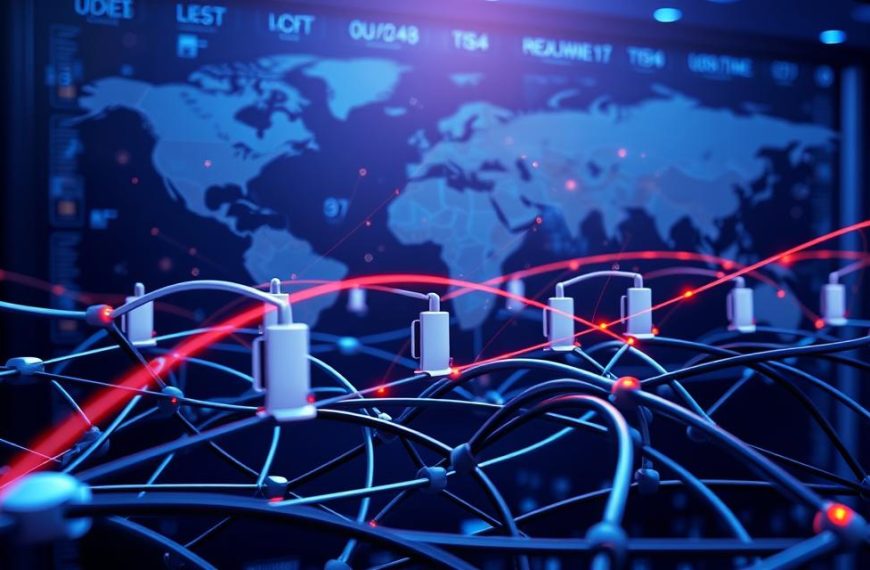Computer hardware forms the backbone of every modern system. These physical components, like CPUs and motherboards, enable devices to process data efficiently. Unlike software, they are tangible and built to last through years of upgrades.
The evolution of hardware spans centuries—from Pascal’s mechanical calculator to today’s high-speed processors. Innovations like Babbage’s difference engine paved the way for today’s enterprise servers and personal laptops.
Modern applications rely on advanced components, such as GPUs for graphics and SSDs for storage. Whether in data centers or home offices, these parts ensure seamless performance across industries.
What Does a Computer Hardware Do?
Every modern system relies on physical components to perform essential tasks. These parts work together to execute instructions, manage data, and deliver results efficiently. Without them, software would have no way to interact with users or complete operations.
The Von Neumann architecture serves as the foundation for most devices today. It outlines four key functions: input handling, storage, computation, and output generation. This design ensures seamless interaction between users and machines.
| Function | Component | Example |
|---|---|---|
| Processing | CPU/GPU | Rendering 3D graphics |
| Storage | RAM/SSD | Loading operating systems |
| Power Management | VRM/CMOS | Maintaining BIOS settings |
| Heat Control | Cooling Systems | Preventing CPU throttling |
Transistors enable binary operations at incredible speeds. Modern processors contain billions of these microscopic switches. They flip between 0 and 1 states to perform calculations instantly.
Advanced cooling solutions maintain optimal performance. From liquid cooling in gaming rigs to industrial chillers in data centers, temperature regulation prevents damage. Thermal throttling automatically reduces clock speeds when components overheat.
Real-world applications demonstrate these principles clearly. GPUs render lifelike game environments while server farms process millions of cloud requests daily. Each scenario showcases hardware capabilities under demanding conditions.
Key Components of Computer Hardware
Modern systems rely on precise coordination between critical components. Each part plays a unique role, from processing data to storing files. Understanding these elements helps optimize performance for gaming, work, or creative tasks.
Central Processing Unit (CPU): The Brain of the System
The CPU executes billions of calculations per second. Its arithmetic logic unit handles math operations, while the control unit manages instructions. Faster clock speeds and multiple cores improve multitasking.
Random Access Memory (RAM): Temporary Data Storage
RAM provides quick access to active files and applications. Unlike permanent storage, it clears when powered off. More RAM allows smoother operation of memory-intensive graphics software or virtual machines.
Storage Drives: HDDs vs. SSDs
Hard disk drives (HDDs) offer large capacities at lower costs. Solid-state drives (SSDs) use flash memory for faster boot times and file transfers. Many systems now combine both for balanced performance.
Motherboard: The Backbone of the System
The motherboard connects all parts, from CPUs to peripherals. High-end models like the ASUS ROG Maximus Z790 support PCIe 5.0 and multiple M.2 slots. Key features include:
- VRM phases: 16+1 power delivery ensures stable CPU performance.
- Form factors: ATX suits gaming rigs; microATX fits compact builds.
- Chipset differences: Z790 supports overclocking, while B760 focuses on efficiency.
BIOS/UEFI firmware manages hardware initialization and settings. Advanced chipsets optimize data flow between graphics cards, storage, and other components.
Internal vs. External Hardware Components
Efficient performance depends on both built-in and peripheral devices. Internal components, like power supplies and motherboards, operate inside the system. External ones, such as monitors and printers, connect via ports or wireless interfaces.
Internal Components: Power and Precision
Power supplies (PSUs) ensure stable energy delivery. High-efficiency models with 80 Plus Gold or Titanium certification reduce waste. These components are critical for gaming rigs and servers.
Storage drives vary in speed and purpose:
- SATA III: 6Gbps, ideal for budget HDDs.
- NVMe SSDs: 20x faster, perfect for OS booting.
External Devices: Speed and Flexibility
Thunderbolt 4 supports 40Gbps transfers, ideal for 4K displays or external GPUs. Compared to USB 3.2 Gen 2×2 (20Gbps), it’s twice as fast for creative workflows.
Key peripherals include:
- eGPUs: Boost laptop graphics for gaming or 3D rendering.
- KVM switches: Share keyboards/mice across multiple PCs.
Enterprise storage solutions, like NAS (network-attached) or SAN (storage-area networks), scale for businesses. NAS suits small teams, while SAN offers high-speed access memory for data centers.
For deeper insights, explore this overview of computer hardware.
Types of Computer Hardware Systems
From compact laptops to massive supercomputers, computing power varies dramatically. Each system is engineered for specific tasks, balancing portability, speed, and scalability.
Personal Computers: Desktops and Laptops
Desktops excel in raw performance, with upgradable parts like GPUs and cooling systems. Laptops prioritize mobility, integrating components into sleek designs.
Key differences include:
- Thermal management: Desktops use air/liquid cooling; laptops rely on compact heat pipes.
- Upgradability: Desktops support modular swaps; laptops often solder parts.
Large-Scale Systems: Mainframes and Supercomputers
IBM’s z16 mainframe processes 19 billion transactions daily, powering banking and logistics. The Frontier Supercomputer hits 1.1 exaFLOPS, tackling climate modeling and AI research.
Advanced features enable this scale:
- Liquid cooling: Data centers use immersion systems to manage megawatt heat loads.
- InfiniBand HDR: 200Gbps networking links nodes for parallel programs.
- Quantum leaps: IBM Quantum System Two operates at near-zero Kelvin for qubit stability.
Scale-up architectures boost single-machine capacity, while scale-out designs distribute workloads across clusters. Both optimize computing efficiency for specialized programs.
How Hardware and Software Work Together
Advanced systems require seamless collaboration between physical and digital elements. Hardware software integration ensures tasks like 3D rendering or AI training execute flawlessly. Without this synergy, even powerful components remain underutilized.
DirectX 12 Ultimate exemplifies this partnership. It optimizes GPU utilization by streamlining instructions for real-time ray tracing and variable-rate shading. Gamers experience lifelike lighting without sacrificing speed.
Key communication layers enable this efficiency:
- WDDM 3.0 drivers: Reduce latency between Windows and graphics cards.
- CUDA cores: Accelerate machine learning workloads in NVIDIA GPUs.
- Tensor cores: Dedicated AI processors enhance deep learning precision.
“NVIDIA’s CUDA architecture transforms parallel computations into actionable insights, from weather modeling to drug discovery.”
Software-defined storage solutions like VMware vSAN leverage hardware software flexibility. They pool SSDs across servers, dynamically allocating resources based on user demand. This approach eliminates bottlenecks in data centers.
Ray tracing showcases the pinnacle of this collaboration. GPUs render light reflections in real-time, while algorithms simulate physics. The result? Cinematic visuals in games like Cyberpunk 2077.
The Evolution of Computer Hardware
Decades of innovation have reshaped how systems process information. From room-sized machines to pocket-sized devices, technology milestones redefine performance limits every year.
Moore’s Law drove transistor shrinkage from 10nm to 3nm nodes. Smaller chips pack more power, enabling AI and 4K streaming. Quantum tunneling now challenges further miniaturization.
Storage media evolved through five key phases:
- Punch cards (1800s): Paper card systems stored program instructions.
- Magnetic disks (1956): IBM’s 5MB HDD weighed a ton.
- Optical drives (1980s): CDs held 700MB, DVDs 4.7GB.
- Flash storage (2000s): SSDs replaced moving parts with chips.
- NVMe (2020s): 30TB HDDs and 15GB/s SSDs dominate.
Peripheral connections streamlined from PS/2 ports to USB-C. Thunderbolt 4 delivers 40Gbps speeds—enough for 8K video editing. Wireless standards like Wi-Fi 6E reduce cable clutter.
“Optical computing could replace electrons with photons, achieving light-speed processing.”
Research breakthroughs include 3D chip stacking and photonic circuits. These technologies may soon make silicon obsolete, just as vacuum tubes faded after transistors emerged.
Hardware Virtualization and Cloud Computing
Cloud platforms leverage advanced hardware partitioning techniques. These methods maximize resource utilization across virtual environments. Enterprises deploy them to reduce costs while boosting power efficiency.
| Type | Installation | Use Case | Example |
|---|---|---|---|
| Type 1 | Direct on hardware | Data centers | VMware ESXi |
| Type 2 | Host OS layer | Development/testing | Oracle VirtualBox |
GPU virtualization (vGPU) splits graphics processors across multiple devices. NVIDIA’s vGPU software allocates cores dynamically. This enables CAD designers and AI researchers to share expensive hardware.
Bare metal cloud instances provide dedicated physical servers. AWS EC2 Bare Metal offers 400Gbps networking for financial modeling. Azure Stack HCI blends these with hybrid cloud flexibility.
Edge computing hardware like NVIDIA Jetson processes data locally. These compact modules analyze sensor feeds in real-time. Benefits include:
- Lower latency: Factory robots react instantly to input changes
- Bandwidth savings: Only critical data transmits to central servers
- Offline operation: Functions continue during network outages
“vGPU technology democratizes high-performance computing, letting teams share workstation-grade resources securely.”
Modern infrastructure relies on these innovations. From hyperscale data centers to IoT sensors, virtual and physical power work in concert.
Conclusion
Computer hardware drives digital transformation, enabling industries to process complex data efficiently. From healthcare to entertainment, these components power innovation at every level.
Future trends like photonic processors and 3D NAND scaling promise faster speeds and higher capacities. Sustainable manufacturing also gains traction, reducing e-waste through modular designs.
Tools like Crucial System Scanner help users make informed upgrade choices. By understanding hardware capabilities, individuals and businesses can optimize performance while minimizing environmental impact.

